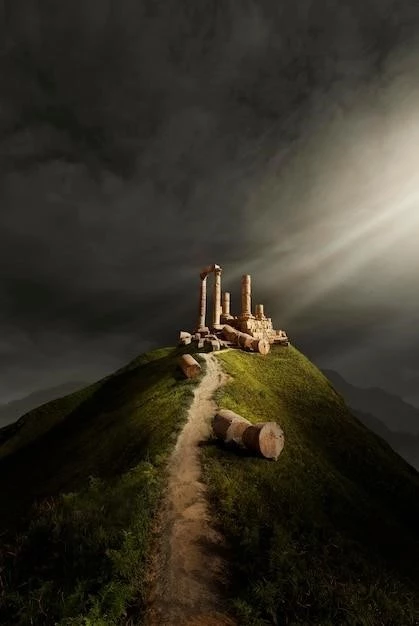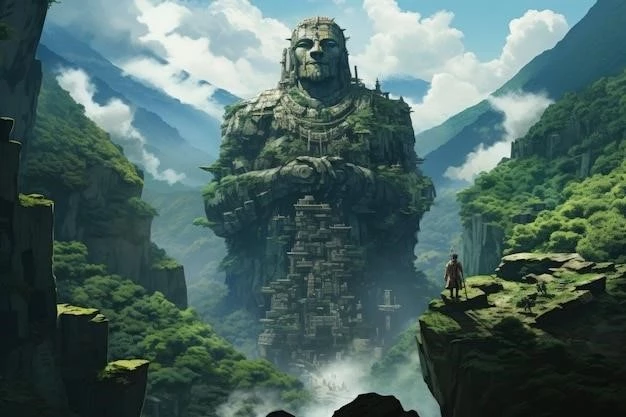The Devils Tower: Sacred Monument or Volcanic Plug?
Rising dramatically from the rolling grasslands of Wyoming, Devils Tower stands as a beacon of geological wonder and cultural significance. This imposing monolith, a solitary giant in an otherwise expansive landscape, has captivated the human imagination for centuries, inspiring awe and reverence in equal measure. Its sheer scale and unusual form have made it a subject of intense scientific study, while its spiritual importance to indigenous tribes adds a layer of cultural richness that deepens its allure.
Geological Origins: A Story Etched in Stone
Geologists, drawn to the Tower’s enigmatic presence, have painstakingly pieced together its fascinating geological history. The consensus is that Devils Tower is an igneous intrusion, a testament to the powerful forces that once shaped this region. Millions of years ago, molten rock, known as magma, forced its way upwards through the Earth’s crust. This magma, however, did not erupt onto the surface as a volcano. Instead, it cooled and solidified beneath a blanket of sedimentary rock.
Over eons, the relentless forces of erosion gradually stripped away the softer sedimentary layers, exposing the hardened igneous core. This core, composed of a rare type of igneous rock called phonolite porphyry, proved more resistant to weathering and erosion, leading to the formation of the towering structure we see today.
The most striking feature of Devils Tower is undoubtedly its remarkable columnar jointing. These vertical columns, predominantly hexagonal in shape, are a direct result of the cooling process of the magma. As the molten rock slowly crystallized, it contracted, creating a network of evenly spaced fractures. These fractures, extending from the base to the summit, give the Tower its distinctive fluted appearance.

The Debate: Intrusive or Extrusive?
While the basic geological narrative of Devils Tower is generally agreed upon, some aspects of its formation remain a subject of debate. One key question revolves around the exact mechanism of magma emplacement. Two main theories have emerged:
- Laccolith Intrusion: This theory posits that the magma intruded between layers of sedimentary rock, forming a mushroom-shaped body known as a laccolith. The overlying sedimentary layers subsequently eroded away, revealing the hardened magma core.
- Volcanic Plug: This alternative theory suggests that Devils Tower may represent the solidified core of an ancient volcano. In this scenario, the outer layers of the volcano, composed of ash and other volcanic debris, eroded over time, leaving behind the more resistant volcanic plug.
Despite ongoing research, a definitive answer remains elusive. Each theory presents compelling arguments, and further study is needed to unravel the remaining mysteries of Devils Tower’s formation.

A Sacred Site: Honoring Indigenous Beliefs
Long before geologists sought to decipher its origins, Devils Tower held profound spiritual significance for numerous Native American tribes, including the Lakota, Cheyenne, and Kiowa. Their oral histories tell of the Tower’s creation and its enduring connection to the spiritual realm.
One prominent legend among the Lakota recounts the story of seven young girls chased onto a rock by a giant bear. As the bear clawed at the rock, trying to reach the girls, the rock rose higher and higher, ultimately carrying the girls into the heavens. The deep grooves etched into the sides of Devils Tower are said to be the marks left by the bear’s claws.
For these tribes, Devils Tower, known to them by names like “Bear Lodge” and “Mato Tipila” (meaning “Bear’s Lodge” in Lakota), is a sacred site, a place of prayer, ceremony, and connection to their ancestors. The Tower continues to be an integral part of their cultural identity, and they have actively sought to protect its sanctity.
Balancing Preservation and Recreation
Designated as the United States’ first national monument in 1906 by President Theodore Roosevelt, Devils Tower attracts visitors from around the world, drawn to its natural splendor and cultural significance. This influx of tourism, however, presents a challenge: how to balance the preservation of this unique site with its role as a recreational destination.
Rock climbing, a popular activity at Devils Tower, has become a point of contention. While many climbers respect the Tower’s sacred nature, others show less regard. In recent years, there have been calls for increased sensitivity and voluntary climbing restrictions during the month of June, a time of particular spiritual significance for many tribes. This ongoing dialogue highlights the complexities of managing such a multifaceted landmark.
Conclusion
Devils Tower stands as a testament to the power of natural forces and the enduring connection between humanity and the natural world. Its geological origins, shrouded in mystery and debate, continue to fascinate scientists and visitors alike. Its cultural significance adds a layer of complexity, reminding us that our understanding of the natural world is incomplete without acknowledging the perspectives and beliefs of indigenous cultures. As we continue to marvel at its towering presence, let us remember the importance of respecting its multifaceted nature, ensuring its preservation for generations to come.










